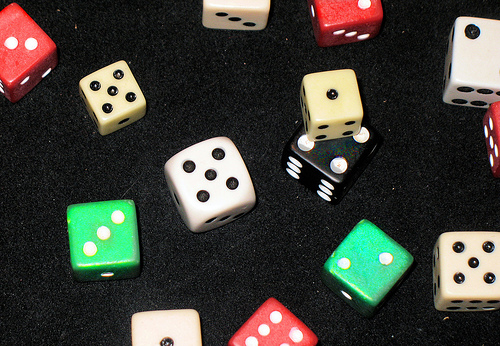Team:HKUSTers
From 2008.igem.org
| Line 1: | Line 1: | ||
| - | [[Image:HK Harbour-1-2.jpg|1200px|center|frameless | + | [[Image:HK Harbour-1-2.jpg|1200px|center|frameless|Probably the most beautiful harbour in the world: Victoria Harbour, taken at the Peak, Hong Kong.]] |
__NOTOC__ | __NOTOC__ | ||
<html> | <html> | ||
| Line 133: | Line 133: | ||
</table> | </table> | ||
</html> | </html> | ||
| - | *We are grateful to | + | |
| + | *We are most grateful to the '''Lee Hysan Foundation''' for their generous support. | ||
*<html> | *<html> | ||
<script language="JAVASCRIPT"> | <script language="JAVASCRIPT"> | ||
| Line 143: | Line 144: | ||
// </script> | // </script> | ||
</html> | </html> | ||
| - | + | ||
| - | < | + | ==Greetings!== |
| - | < | + | [[Image:logo_ust(s).jpg|1200px|right|frameless|Our logo:The ''Bauhinia purpurea x variegata'' at the top-left corner is the floral emblem of Hong Kong; the red sundial on the left represents HKUST, as there is a large sundial in HKUST as a landmark; the Chinese brush style English letters reflect the cultural diversity of Hong Kong as a place where east meets west.]] |
| - | + | ||
| - | | | + | Hi folks! |
| + | |||
| + | |||
| + | We are the iGEM team from the Hong Kong University of Science and Technology (HKUST) - a university with a famous name but a somewhat less attractive English abbreviation...so we decided to call ourselves "HKUSTers", pronounced like H-cooooolsters! | ||
| + | |||
| + | |||
| + | We are also proud of our Logo: The ''Bauhinia purpurea x variegata'' at the top-left corner is the floral emblem of Hong Kong; the red sundial on the left represents HKUST, as there is a large sundial in HKUST as a landmark; and the Chinese brush style English letters reflect the cultural diversity of Hong Kong as a place where east meets west. | ||
| + | |||
| + | |||
| + | On the Jamboree, we will present our work on '''Saturday Nov.8, 5pm, Room 34-101''' and | ||
| + | |||
| + | <font-size: 500%>rEqUEst thE plEAsUre of yOUr cOmpAny</font-size>! | ||
| + | |||
| + | |||
| + | Hope you enjoy our Website which is a bit..random, but for good reasons. | ||
| + | |||
| + | |||
| + | ==Introduction to Our Project:== | ||
| + | |||
| + | [[Image:dgpd.jpg|700px|center|frameless|Does God play dice with the cell?]] | ||
| + | [[Image:Randomness.JPG|1200px|center|frameless]] | ||
| + | |||
| + | ==Randomness is everywhere!== | ||
| + | |||
| + | [[Image:381184220_4cfce0c86a.jpg|200px|right|frameless]] | ||
| + | You may not have realized it, but ''randomness'' is also very important even outside the casino. It plays an important role in mathematics, cryptography, engineering, computer science and even medicine. Randomness is often needed in reducing bias. | ||
| + | |||
| + | Here just 2 random examples of naturally occuring random events: | ||
| + | |||
| + | * Random motions of molecules that explains phenomena in thermodynamics and properties of gases | ||
| + | |||
| + | * Random genetic mutations that makes natural selection possible and lead to diversity of life | ||
| + | |||
| + | |||
| + | |||
| + | ==True Randomness?== | ||
| + | |||
| + | When random numbers are needed, they are usually generated by computers. But how? Can we trust mathematicians? | ||
| + | |||
| + | ''Anyone who considers arithmetical methods of producing random digits is, of course, in a state of sin.'' | ||
| + | — John von Neumann (1951) | ||
| + | |||
| + | And John von Neumann was a pioneer in computer-based random number generators... | ||
| + | |||
| + | |||
| + | The problem is, these computers generate ''pseudorandom'' numbers. A pseudorandom process is a process that appears random but is not - pseudorandom sequences typically exhibit statistical randomness while being generated by an entirely deterministic causal process. | ||
| + | |||
| + | |||
| + | But we have decided to design a '''''GENUINE''''' -- | ||
| + | [[Image:name_ran3.jpg|800px|center|frameless]] | ||
| + | |||
| + | |||
| + | |||
| + | Admittedly, computers are smart, they can easily perform 1000000000 computations within a single second, while dozens of iGEM teams struggle to teach a cell to work out ''one'' logical gate in a time-scale of hours... Nevertheless, we as synthetic biologists dare to challenge the traditional Computer random number generators, for our cells have a huge advantage over the deterministic computers: we can use ''external entropy''! | ||
| + | |||
| + | |||
| + | We want to engineer ''E. coli'' so that each single cell works as a dice. Stochastic events at the molecular level shall dictate the generation of true randomness. Plus, since our little "dices" can easily self-replicate, extended with a proper read-out system we can have a muuuuuuuulti-digit binary number generated...at least in theory. | ||
| - | + | Mr. Einstein always wondered whether God play dice with the universe. Well, ''that'' we don't know either, but our bet is that at least - | |
| - | ''' | + | <p align="center">'''God plays dice with the cell'''.</p> |
| - | + | Oh and by the way ''WE'' don't bet ''randomly'' - for our rationale, please see our modelling/simulation part. For detailed design, please see our Project page. We also have a more informative abstract (sharply tailored for that 150-words requirement): | |
| + | ===Abstract=== | ||
Stochastic fluctuation in a cellular context and the lambda-phage bifurcation have been extensively studied. However, from a bottom-up synthetic aspect, we aim to exploit the cellular "noise" to build an E. coli version of a computational device, the "Random Number Generator". One random binary digit can be generated by capturing an initial Polymerase binding event with a pair of mutually exclusive promoters. Reciprocal inhibition using two repressors shall achieve unilateral expression of the "switch", with fluorescence reporters indicating the probability of each alternative occurrence. Balancing the two sets of affinity and kinetic parameters and | Stochastic fluctuation in a cellular context and the lambda-phage bifurcation have been extensively studied. However, from a bottom-up synthetic aspect, we aim to exploit the cellular "noise" to build an E. coli version of a computational device, the "Random Number Generator". One random binary digit can be generated by capturing an initial Polymerase binding event with a pair of mutually exclusive promoters. Reciprocal inhibition using two repressors shall achieve unilateral expression of the "switch", with fluorescence reporters indicating the probability of each alternative occurrence. Balancing the two sets of affinity and kinetic parameters and | ||
maintaining a single copy of this synthetic device integrated into the bacterial chromosome shall improve performance. | maintaining a single copy of this synthetic device integrated into the bacterial chromosome shall improve performance. | ||
Revision as of 01:36, 30 October 2008
| Home | The Team | The Project | Parts to the Registry | Modelling | Notebook | Gallery |
- We are most grateful to the Lee Hysan Foundation for their generous support.
Greetings!
Hi folks!
We are the iGEM team from the Hong Kong University of Science and Technology (HKUST) - a university with a famous name but a somewhat less attractive English abbreviation...so we decided to call ourselves "HKUSTers", pronounced like H-cooooolsters!
We are also proud of our Logo: The Bauhinia purpurea x variegata at the top-left corner is the floral emblem of Hong Kong; the red sundial on the left represents HKUST, as there is a large sundial in HKUST as a landmark; and the Chinese brush style English letters reflect the cultural diversity of Hong Kong as a place where east meets west.
On the Jamboree, we will present our work on Saturday Nov.8, 5pm, Room 34-101 and
rEqUEst thE plEAsUre of yOUr cOmpAny!
Hope you enjoy our Website which is a bit..random, but for good reasons.
Introduction to Our Project:
Randomness is everywhere!
You may not have realized it, but randomness is also very important even outside the casino. It plays an important role in mathematics, cryptography, engineering, computer science and even medicine. Randomness is often needed in reducing bias.
Here just 2 random examples of naturally occuring random events:
- Random motions of molecules that explains phenomena in thermodynamics and properties of gases
- Random genetic mutations that makes natural selection possible and lead to diversity of life
True Randomness?
When random numbers are needed, they are usually generated by computers. But how? Can we trust mathematicians?
Anyone who considers arithmetical methods of producing random digits is, of course, in a state of sin. — John von Neumann (1951)
And John von Neumann was a pioneer in computer-based random number generators...
The problem is, these computers generate pseudorandom numbers. A pseudorandom process is a process that appears random but is not - pseudorandom sequences typically exhibit statistical randomness while being generated by an entirely deterministic causal process.
But we have decided to design a GENUINE --
Admittedly, computers are smart, they can easily perform 1000000000 computations within a single second, while dozens of iGEM teams struggle to teach a cell to work out one logical gate in a time-scale of hours... Nevertheless, we as synthetic biologists dare to challenge the traditional Computer random number generators, for our cells have a huge advantage over the deterministic computers: we can use external entropy!
We want to engineer E. coli so that each single cell works as a dice. Stochastic events at the molecular level shall dictate the generation of true randomness. Plus, since our little "dices" can easily self-replicate, extended with a proper read-out system we can have a muuuuuuuulti-digit binary number generated...at least in theory.
Mr. Einstein always wondered whether God play dice with the universe. Well, that we don't know either, but our bet is that at least -
God plays dice with the cell.
Oh and by the way WE don't bet randomly - for our rationale, please see our modelling/simulation part. For detailed design, please see our Project page. We also have a more informative abstract (sharply tailored for that 150-words requirement):
Abstract
Stochastic fluctuation in a cellular context and the lambda-phage bifurcation have been extensively studied. However, from a bottom-up synthetic aspect, we aim to exploit the cellular "noise" to build an E. coli version of a computational device, the "Random Number Generator". One random binary digit can be generated by capturing an initial Polymerase binding event with a pair of mutually exclusive promoters. Reciprocal inhibition using two repressors shall achieve unilateral expression of the "switch", with fluorescence reporters indicating the probability of each alternative occurrence. Balancing the two sets of affinity and kinetic parameters and maintaining a single copy of this synthetic device integrated into the bacterial chromosome shall improve performance.
If successful, coupled with other reporters we envision multiple extensions of this "Randomizer", including a Memorizer that utilizes a hierarchy of XOR-calculations to "store" a multi-digit random number, and intriguing pattern generation involving chemical gradients and random "population behavior".
 "
"





